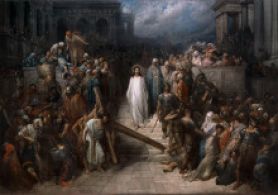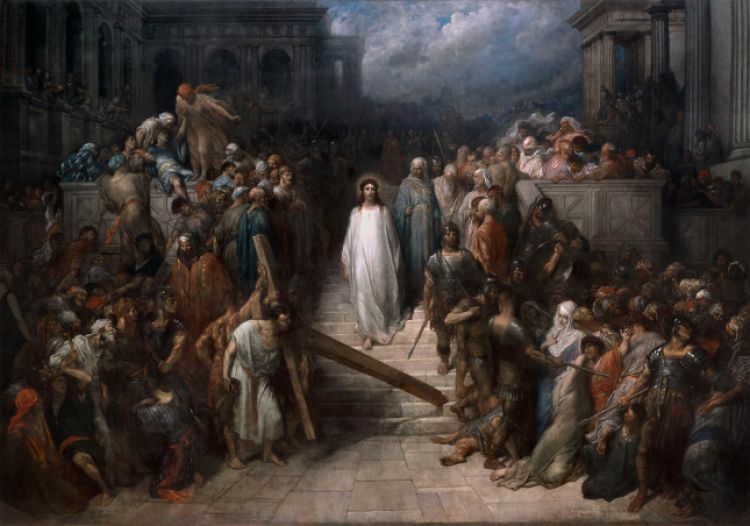Christ leaving the Praetorium

Born in Strasbourg in 1832, Gustave Doré was one of the great illustrators of the 19th century, although his work as a painter was less well-known. Resentful of this neglect in France, he accepted a proposal from London art dealers to open a "Doré Gallery" in 1868, where his paintings were to be permanently exhibited.
Christ leaving the Praetorium, his largest religious painting, thus became a Doré Gallery masterpiece, later disappearing into storage after a long tour of the United States and finally being purchased in Vienna by the Strasbourg Museums in 1998 before being restored.
This monumental work shows a rarely treated episode, here transformed into a piece of stage machinery in the style of the future historical epics of the cinema. All the figures mentioned in the Gospel, from Christ's judgement to his crucifixion, are thus brought together. Perfectly placed in the centre of the picture, his forehead already scarred by the crown of thorns, he moves towards the cross which he will carry to Mount Golgotha. Dressed in white, Jesus seems to irradiate the whole scene with a soft supernatural light. He is also the only one among the multitude of characters to turn his gaze towards the spectator.
The work exemplifies the numerous landscapes and religious scenes of the last fifteen years of Doré's life. Particularly striking are the breadth of its composition, the vitality emanating from a swarming, gesturing crowd, and the effectiveness of its theatrical dramatic staging.
